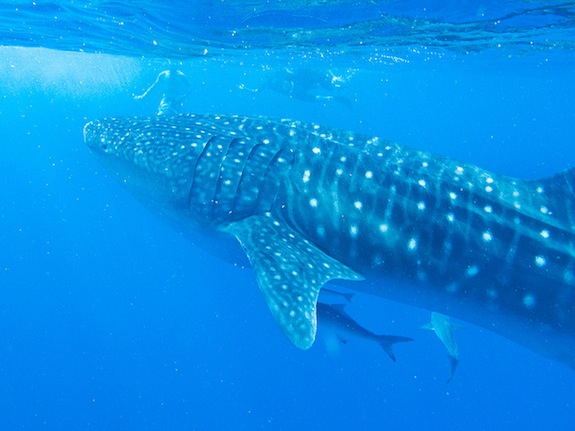Tourists’ Photos Could Help Scientists Understand Whale Sharks
Every year, tourists take approximately a bazillion pictures. Most of them never wind up anywhere but someone’s hard drive, never seen again, but some of those pictures might actually be useful. Especially if they’re of whale sharks

Image: Jae
Every year, tourists take approximately a bazillion pictures. Most of those pictures never wind up anywhere but on a hard drive somewhere, never to be seen again, but some might actually be useful. Especially if they’re of whale sharks. Researchers studying the gigantic sharks in the Indian Ocean are hoping to use photographs from tourists in the Maldives to track and study their subjects.
In a study published by the Imperial College of London, researcher Tim Davies looked at hundreds of tourist-taken pictures in order to figure out how reliable they are. Essentially, he wanted to know whether our snapshots were good enough to identify a shark. For whale sharks, that means capturing the whale shark’s fingerprint—a specific pattern on its skin, right behind the gills. Imperial College London summarizes the results:
The study looked at hundreds of images taken by the public, of which many were downloaded from image-sharing websites such as Flickr and YouTube. Individual whale sharks could be successfully identified in 85 per cent of cases, surprisingly close to the 100 per cent identification possible in photographs taken by researchers.
This works well in the Maldives because people come there specifically for the sharks, so you’re guaranteed to get some photos. Davis told Wired:
“Globally, this outcome provides strong support for the scientific use of photographs taken by tourists for whale shark monitoring,” said lead researcher Tim Davies of Imperial College’s Department of Life Sciences.
“Hopefully, this will give whale shark research around the world confidence in using this source of free data. In the Maldives in particular, where whale shark tourism is well established and very useful for collecting data from throughout the archipelago, our results suggest that whale shark monitoring effort should be focused on collecting tourist photographs.”
In the future, researchers hope to be able to simply collect data from places like Flickr and YouTube and be able to identify and track individual sharks as they move about in their environment. And unlike people, the whales can’t complain about facial recognition technology.
More from Smithsonian.com:
How Do You Feed A Whale Shark?
These Models Probably Never Thought They’d Be Shooting Fashion Photos With Whale Sharks
/https://tf-cmsv2-smithsonianmag-media.s3.amazonaws.com/accounts/headshot/Rose-Eveleth-240.jpg)
/https://tf-cmsv2-smithsonianmag-media.s3.amazonaws.com/accounts/headshot/Rose-Eveleth-240.jpg)